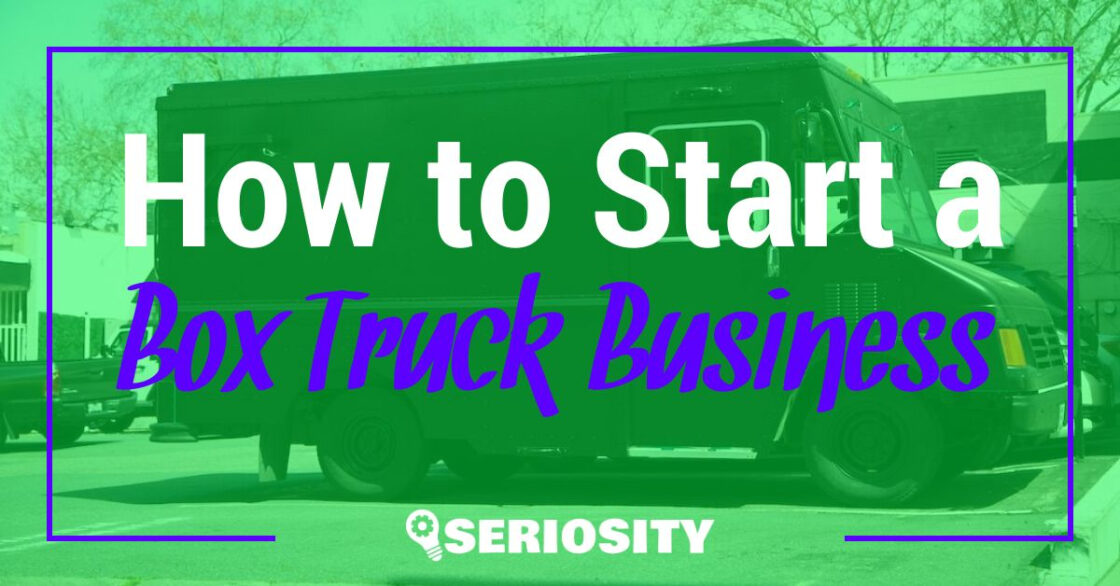Starting a quilting business can be an excellent opportunity for anyone passionate about the art of quilting and looking to turn their hobby into a profitable venture. This age-old craft has evolved over time, and today, quilt making has found its place in the modern world, attracting a new generation of enthusiasts. By creating a thoughtful business plan and building a strong brand identity, aspiring entrepreneurs can enter the exciting world of professional quilting and set themselves up for success.
Before jumping into the business side of things, it is essential to familiarize oneself with the quilting industry’s ins and outs. This includes researching local markets to gauge the demand for professional quilting services, understanding the necessary permits and licenses, and identifying areas where your particular skills and style can help you stand out. To create a sustainable and profitable quilting business, investing time in planning and strategizing will pay off in the long run.
In the subsequent sections, we will explore the essential steps needed to launch a successful quilting business. These steps include forming a legal entity, registering for taxes, opening a business bank account, obtaining necessary permits and licenses, and setting up essential accounting and bookkeeping systems. By following this guide, you’ll be well on your way to transforming your quilting passion into a thriving business.
Starting a Quilting Business
Passion and Commitment
To start a successful quilting business, it’s essential to have a passion for quilting and commitment to the craft. As an entrepreneur, you need to be dedicated to improving your skills and producing quality products. Invest in a high-quality sewing machine, materials, and other tools to create beautiful and durable quilts. Taking the time to hone your skills and develop efficient work processes can set you up for success as a quilting business owner.
Understanding the Market
Before starting your quilting business, it’s important to understand your target market and the demands of potential customers. This will help you tailor your products and services to meet their needs effectively. Consider the following aspects of your market research:
- Demographics: Identify your target audience’s age, gender, location, and other relevant characteristics.
- Market trends: Stay informed about the latest quilting trends, popular quilt styles, and new techniques in order to provide a competitive advantage.
- Competition: Analyze your local and online competition to learn about their strengths and weaknesses. This will help you identify gaps in the market and unique selling points for your quilting business.
| Market Research Aspects | Key Considerations |
|---|---|
| Demographics | Age, gender, location, etc. |
| Market trends | Popular quilt styles, techniques, etc. |
| Competition | Local and online competitors, strengths and weaknesses, etc. |
Once you have a solid understanding of the market and have identified your target audience, you can move on to establishing your business, including creating a business plan, forming a legal entity, and setting up accounting systems. Register your business, obtain necessary permits and licenses, and purchase insurance to protect your enterprise. Then, focus on defining your brand, marketing your creations, and building a strong customer base. With dedication, hard work, and a passion for quilting, aspiring quilters can turn their hobby into a thriving business venture.
Creating a Business Plan
Executive Summary
In this section, briefly summarize your quilting business plan. Focus on the most important aspects of your business, such as the services you offer, target market, operational plan, and the projected revenue. Keep this summary concise and to-the-point to give the reader a clear understanding of your overall business vision.
Company Description
Provide a detailed overview of your quilting business in this section. Outline the types of services you plan to offer, such as quilting, piecing for others, basting services, binding, and more. If you intend to sell products like thread, batting, or backing, include this information as well. Explain what sets your business apart from other quilting businesses in the market and emphasize any unique selling points.
Market Research
In this section, discuss the market research you have conducted to build your quilting business plan. Consider the overall quilting industry, the specific niche you are targeting, and any trends or consumer demands within that niche. Analyze your target market’s demographics, preferences, and needs to help inform your marketing and operational strategies.
Operational Plan
Outline the day-to-day operations of your quilting business in this section. Include information about:
- Your workspace setup
- Equipment and materials needed
- Staff and/or subcontractors (if applicable)
- Workflow and production timeline
- Quality control measures
By detailing these aspects, you will provide a clear picture of how your business functions and how you maintain a high level of quality in your quilting services.
Financial Plan
In this section, present the financial projections for your quilting business. Use tables and bullet points as needed to clearly convey this information. Consider including the following:
- Startup costs (equipment, materials, etc.)
- Monthly expenses (rent, utilities, marketing, etc.)
- Projected revenue and cash flow
- Break-even analysis
- Financial goals (short-term and long-term)
By providing a comprehensive financial plan, you can illustrate the financial viability of your quilting business and establish a roadmap for achieving your revenue goals.
Determining the Business Structure
When starting a quilting business, an important initial step is to determine the appropriate business structure. The structure you choose will affect your taxes, personal liability, and the way you run your business. In this section, we will discuss four common business structures: Sole Proprietorship, Partnership, Limited Liability Company (LLC), and Corporation.
Sole Proprietorship
A sole proprietorship is the simplest form of business structure, and it is particularly popular among small business owners or self-employed individuals. This structure is easy to establish and requires minimal paperwork. However, a significant drawback of a sole proprietorship is that the owner is personally liable for all debts and obligations of the business.
- Advantages:
- Easy to establish
- Minimal paperwork
- Complete control over business decisions
- Disadvantages:
- Personal liability for business debts and obligations
- Limited access to external financing
Partnership
A partnership consists of two or more individuals who jointly own and operate the business. The profits and losses are shared among the partners based on their partnership agreement, and each partner has personal liability for the partnerships’ debts and obligations.
- Advantages:
- Shared decision-making
- Low start-up costs
- Minimal paperwork
- Disadvantages:
- Personal liability for debts and obligations
- Potential conflicts among partners
Limited Liability Company (LLC)
An LLC is a hybrid structure that combines the limited liability protection of a corporation with the operational flexibility of a sole proprietorship or partnership. This legal business entity structure has become increasingly popular for small businesses due to its flexibility and legal protection for personal assets.
- Advantages:
- Limited liability protection for personal assets
- Flexible tax treatment
- Fewer regulations and management requirements
- Disadvantages:
- More paperwork and fees compared to sole proprietorships and partnerships
- Limited life if a member leaves or dies
Corporation
A corporation is a separate legal entity owned by shareholders, offering limited liability protection for the owners. While a corporation offers strong legal protection and increased access to financing, it requires more paperwork, regulation, and operational management.
- Advantages:
- Limited liability protection for personal assets
- Increased access to financing
- Transferable ownership shares
- Disadvantages:
- Increased paperwork and regulation
- Double taxation
- Increased operational management
Choosing the right business structure for your quilting business is crucial, as it can impact taxation, personal liability, and the day-to-day management of your business. To make an informed decision, consider consulting a professional such as an attorney or accountant.
Registering Your Quilting Business
Obtaining an EIN
To start your quilting business, you will need to obtain an Employer Identification Number (EIN) from the Internal Revenue Service (IRS). An EIN is required for tax purposes, as it helps to identify your business as a separate legal entity.
- Visit the IRS website, and complete the EIN application process online.
- Alternatively, you can apply via mail by filling out Form SS-4.
LLC Formation and Corporate Organization
One of the most common business structures for a quilting business is a Limited Liability Company (LLC). Forming an LLC can provide personal liability protection and potential tax benefits.
Creating an LLC involves several steps:
- Choose a unique name for your quilting business.
- File Articles of Organization with the Secretary of State in the state where you will operate your business.
- Appoint a Registered Agent who will receive official business documents on behalf of your LLC.
- Create an Operating Agreement, outline the ownership and operating procedures of your business.
Remember to consider annual state compliance requirements, such as state sales tax and franchise tax, to ensure your business remains in good standing.
Acquiring Business Licenses and Permits
To operate your quilting business, it’s essential to acquire the relevant business licenses and permits. The specific requirements for these documents may vary based on your location, the scope of your quilting services, and other factors.
- Seek guidance from your local city or county to understand the exact requirements.
- Fill out the application forms, and submit them to the appropriate licensing authorities.
In addition to licenses and permits, don’t forget to establish a business bank account and set up an accounting system to manage your finances effectively. By following these guidelines and ensuring that your quilting business is registered and compliant, you’ll be well on your way to building a successful venture.
Establishing Finances
Opening a Business Bank Account
Opening a business bank account is a crucial step in establishing a quilting business. This helps you separate personal and business finances, making it easier to manage funds and legal liabilities. To open a account, you’ll need:
- Legal business entity documentation
- Employer Identification Number (EIN)
- Business licenses and permits
Securing Financing
Before starting your quilting business, you’ll need to secure financing to cover initial costs and ongoing expenses. Consider the following funding options:
- Personal savings or assets
- Small business loans
- Family and friends
- Crowdfunding
Review each option carefully, considering interest rates, repayment terms, and potential impact on personal relationships.
Managing Costs and Income
Properly managing costs and income is essential for your quilting business’s success. Keep track of expenses, such as:
| Fixed Costs | Variable Costs |
|---|---|
| Rent | Fabric |
| Utilities | Thread |
| Equipment | Batting |
| Insurance | Shipping |
| Marketing | Packaging |
Monitor income closely, ensuring you charge reasonable rates for services and products, and adjust pricing as necessary. Consider implementing accounting software to help manage finances and make informed decisions.
Setting Up Your Quilting Shop
Inventory and Supplies
When setting up your quilting business, the first step is to gather the necessary inventory and supplies. This will include fabric, threads, patterns, and more. Having a well-stocked inventory will attract customers to your shop.
- Fabric: You’ll need a variety of fabrics in different colors, patterns, and materials.
- Threads: Offer threads in different materials, weights, and colors to match fabrics.
- Patterns: Include a selection of both traditional and modern quilt patterns.
- Quilting Tools: Stock up on cutting tools, rulers, pins, and other essential quilting items.
Quilting Machines
Investing in dependable, high-quality quilting machines is crucial for your business, especially if you plan to offer longarm quilting services. Consider the following machine types:
- Domestic Sewing Machines: Useful for basic piecing and quilting tasks.
- Longarm Quilting Machines: These machines allow for larger quilting projects and can boost your shop’s production capacity.
When selecting machines, consider factors such as ease of use, warranty, and maintenance requirements.
Location and Workshop Space
Your quilting shop’s location and workspace are essential components of your business. Keep the following in mind when selecting a space:
- Accessibility: Choose a location that is easily accessible to customers, with ample parking and public transportation options.
- Space and Layout: Ensure the workshop has adequate space for storing inventory, setting up quilting machines, and hosting classes or events.
- Utilities: Make sure the location has reliable electrical supply and internet access for operating quilting machines and conducting online sales.
In conclusion, setting up a successful quilting shop requires thoughtful planning and investment in inventory, quilting machines, and an ideal location. By considering these factors, you’ll create a strong foundation for your quilting business to thrive.
Defining Your Niche and Target Market
Types of Quilting Services
When starting a quilting business, it’s essential to define the types of services you want to offer. Some possibilities include:
- Custom quilting: Creating quilts designed and personalized for individual clients
- Longarm quilting: Providing machine quilting services for others’ quilt tops
- Quilt restoration: Repairing and restoring older or damaged quilts to preserve their value
- Quilt classes and workshops: Teaching others how to quilt through in-person or online classes
- Selling quilting supplies: Offering fabric, patterns, and quilting tools to customers
Consider your strengths and expertise when choosing which services to offer.
Specialized Quilt Patterns
Another way to define your niche in the quilting market is to specialize in specific quilt patterns or styles. These can be based on:
- Traditional quilt patterns: Classic designs such as log cabin, nine patch, or flying geese
- Regional styles: For example, Amish or Hawaiian quilts
- Themes: Catering to specific interests like animals, holidays, or nature
- Techniques: Appliqué, paper piecing, or free motion quilting
By specializing in a particular style, you can attract a target audience interested in that aspect of quilting.
Identifying Your Target Audience
A successful quilting business requires a well-defined target market. Here are some steps to help you identify your target audience:
- Research: Investigate the quilting community to understand their needs and preferences.
- Demographics: Consider who is most likely to be interested in your services, such as their age, gender, and geographic location.
- Skill level: Cater to a specific skill level, such as beginners, intermediate, or expert quilters.
- Interests: Identify what styles or themes resonate with your target market.
By considering these factors, you can tailor your marketing strategy to better reach your target audience and provide the products and services they desire.
Marketing
Managing Operations and Growth
Teaching and Workshops
One way to grow your quilting business and increase profits is by offering teaching and workshops. Share your expertise with others by conducting classes or workshops in various quilting techniques. This can be done either in person or through online platforms such as video tutorials, webinars, or online courses. This provides an additional revenue stream and can help you build a loyal customer base who will be more likely to purchase your products.
Part-Time vs. Full-Time Commitment
A quilting business can be run as a part-time or full-time venture, depending on your personal goals and resources. A part-time commitment may be suitable for those who are new to the industry or have other responsibilities. However, a full-time commitment will likely lead to greater success and profitability in the long term, as it allows for increased focus on business growth and expansion opportunities.
If choosing to run a part-time quilting business, consider allocating dedicated hours to work on your business to maintain consistency and progress.
Monitoring Success and Competition
To ensure the longevity and success of your quilting business, it’s essential to keep an eye on your competition and industry trends. Conduct regular market research to stay updated on new technologies, products, and designs in the longarm quilting business. This will help you maintain relevance and adapt your product offerings to meet the ever-changing market demands.
Additionally, monitor the success of your own business by setting achievable goals and benchmarks. Track your progress regularly to evaluate your growth and identify areas that require improvement or adjustment. This will enable you to make well-informed decisions and guide your business towards ongoing success.
Legal and Tax Considerations
Choosing an Accountant
An important step in starting a quilting business is selecting an accountant to help manage your financial records and ensure compliance with tax regulations. Some factors to consider when choosing an accountant include:
- Experience in your industry
- Reputation and references
- Qualifications and certifications
An accountant can advise you on the appropriate structure for your business and help you set up necessary tax and accounting systems.
Insurance Requirements
Insurance is crucial for protecting your quilting business from potential losses due to accidents, damages, or liability issues. Some common types of insurance needed for a quilting business include:
- General liability insurance: Covers damages to third parties, such as customers or suppliers.
- Property insurance: Protects your business property, such as equipment and inventory, from losses caused by events like theft, fire, or natural disasters.
You may also want to consider a comprehensive business insurance package that includes coverage for various risks relevant to your quilting business.
Understanding Tax Obligations
Your quilting business will be subject to several tax requirements at various levels: federal, state, and local. It is important to understand these obligations and stay compliant with the applicable rules. Some key tax aspects to be aware of include:
- Business structure: Your choice of business entity (e.g., sole proprietorship, partnership, corporation) will affect the income, employment tax, and information returns to be filed. Consult with your accountant to choose the most suitable structure for your business.
- Employer Identification Number (EIN): An EIN, also known as a federal tax identification number, is used to identify your business. Most businesses need one, so ensure you have yours.
- Sales tax: If your quilting business sells products, you may need to collect sales tax and remit it to the appropriate authorities. Check your state and local regulations for specifics.
- Employee taxes: If your quilting business has employees, you will need to set up payroll and withhold appropriate taxes (e.g., Social Security, Medicare, federal and state income taxes).
It’s crucial to work closely with your chosen accountant to handle these tax obligations and stay compliant with regulatory requirements.





